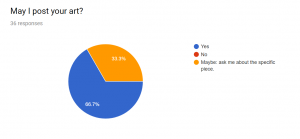One of the hardest things about this first semester has been learning what will trip students up. Where the instructions will lead to confusion, which projects students will struggle with, what processes are going to be the most challenging. It’s a little heartening to know that the work I’ve put in this semester to put those fires out will be preventative in future sections, but those supplementary materials I’ve been able to design this semester have all been a little depressing as they arrive after the issues are over for the bulk of students.
On a more positive note, though, seeing all the different ways students have misunderstood or struggled with something has been stewing in my mind like a delicious meal, and I’m excited to make some really polished materials to help students through those road blocks.

My first project is to clear up the confusion on some of my Digital Imaging assignments. In an assignment where students design their own original magazine mock-cover, I’ve been surprised by how many students submit images that are weird shapes, or even landscape in orientation. However, the more I thought about it, I realized this was the first project where students are asked to create an image that represents a physical object from scratch.
There’s a breakdown in the thought process as students transfer the image from 2D to 3D–which is an ironic issue, since a large part of art education is teaching students to transform the 3D to 2D (like in drawing a still life.)
I had been vaguely planning to create a video for this project–the magazines I have crammed into my mail “organizer” were going to be featured, while I talked about compositional elements on their covers. (I was sending a mental thank-you to whatever clerical error has been sending me Martha Stewart Living for the last 4 years despite my having never subscribed or paid for it.)
However, after learning about H5P, I had a different idea. Why not create an interactive image, that draws attention to some of the parts of a magazine cover that I want students to concentrate on?
So I created this.

It was so easy to use, and it was a great first experience with H5P. I feel like I was able to quickly create something very useful for my students–creating a video would’ve taken about three times as long.
This is only my first experiment with H5P: but as I learn more about where students need support through assignments and what I can do to extend their learning, I’m looking forward to creating more interactive content for my courses!



